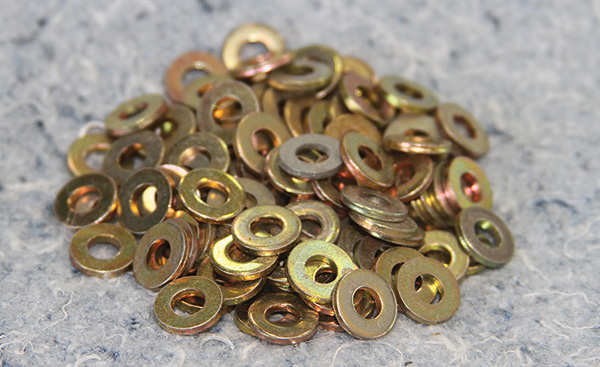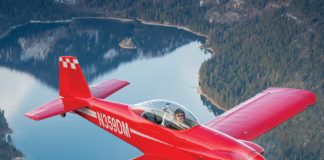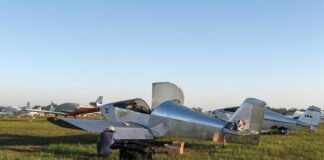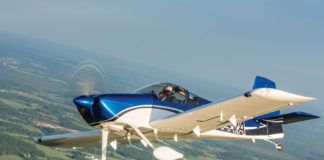I’d like—if I may—to take a few minutes to talk about the lowly washer. Yes, that little disk of metal with a hole punched through it—the partner to bolts and screws, the friend of nuts and fasteners. We see washers by the thousands—the tens of thousands—but do we really appreciate them? Oftentimes, we notice them only by their absence—and then we go hmmm…
Washers serve several different purposes. In soft structures such as wood, they provide a bearing surface for the bolt or screw they are partnered with, allowing the clamping force of the fastener to be spread over a larger surface and prevent crushing or pulling through the material. Dimpled Tinnerman washers are often used with flush screws in composite structures for the same purpose. We can use such a washer from the start—or add one later when the hole gets wallowed out and we have no choice.
When it comes to metal structures, washers serve to take up extra length if a bolt is slightly long for the thickness of the material, but we can’t go to the next length bolt because then it would be too short. For this application, we also have the “lite” version of each washer—the thin “L” number in case we need to adjust the thickness by just a little bit. We are allowed three washers to adjust for length—and no more. If it takes four to do the trick, then go to the next shorter bolt. If you don’t like the looks of three washers stacked under the nut, move one to under the bolt head; that is allowed, and also encouraged if the bolt needs to be turned instead of the nut.

How many washers are in your Experimental aircraft? If you’ve actually counted them, send an email to [email protected]. We’d like to know, too!
The other purpose of a washer is to prevent damage to the structural member itself due to galling (scraping the surface) when the fastener (either the nut or the bolt head) moves relative to the surface when being tightened. Scraping the metal removes any surface coating used for corrosion protection and can create stress risers if we scrape it badly enough. Putting a washer between the surface and the fastener allows the washer to stay put relative to the metal, and the bolt head or nut to scrape the washer instead.
The proper use and application of washers is something that is covered in a number of mechanics textbooks, reference manuals, and, of course, AC43.13—the document issued by the FAA to provide acceptable techniques and practices when no aircraft-specific guidance is given by the designer or manufacturer. Unfortunately, AC43.13 does a good job of describing various washers, but it doesn’t actually answer some very basic questions, such as if a washer is absolutely required. It does tell us about the three-washer rule—but how about a case where you find the use of a washer impractical or redundant—can you omit them? It is not clear on that score.
The use of washers is often passed down from father to son or instructor to student when mechanics are trained. As homebuilders, we have to make a great many decisions on our own—it is rare when a kit or manual is so complete that we don’t have to use our own judgment. Most kits I have seen have a section in the instruction manual that tells builders to use their own judgment when it comes to rivet or bolt length, and to use “good techniques and practices.” But we can’t expect them to tell us the exact washer usage for every bolt on the airframe—there are simply too many variables for that.

If you don’t like the looks of two washers stacked under the nut, move one to under the bolt head. This is allowed, especially if the bolt needs to be turned instead of the nut.
Many plansbuilt airplanes don’t show any hardware callouts at all, beyond maybe specifying the diameter of bolts to be used in a location (leaving length, nuts, and washers up to the builder). A lot of kit instructions call out a bolt and nut, but don’t always specify washers, assuming that a builder knows the “good techniques and practices,” or will learn them from someone else. This is fine for a builder who has some experience in aircraft construction or maintenance—or has a good support system of mechanics or other builders to guide them as they learn the tricks of the trade. But for those building in a vacuum—without the support of other builders or an EAA chapter—it is easy to use experience from home maintenance or automotive repair, and much of that isn’t necessarily applicable to aviation.
The use of washers came to my attention when taking a good, thorough look at a kit airframe that we are helping to finish. To put it most accurately, the use is somewhat random—in some places, washers are used to good practice, in others, well—not so much. Research into the plans shows little guidance on their usage. The plans are great on the details of riveted structure, but when it comes to assembly, they leave it up to the builder. And that is unfortunate because while the designer might have known intuitively what was necessary, the builder out in the hinterlands might—or might not—know what they are supposed to do.
The lesson, in the end, is for builders to understand that in most cases, the instructions that came with their kit or plans will leave out a lot of details. Airplanes are all about details you see—yet no one does a really good job of writing them all down. Whether it is the proper use of washers, lubricating fuel fittings during installation, or the secrets of safety wiring, it is important to realize that the average builder is new to this. Remember that we are building for education and recreation—and that statement implies that there is a lot to learn. Don’t be afraid to ask for help, and don’t assume that everything is in your instructions. Find a tech counselor, a mechanic, or a fellow builder that you trust. Have them check your work—and ask if they’d like you to check theirs. Assume that there are missing parts and details in the plans—and ask yourself, what is good and proper in this application? When in doubt, look for help!

![]()
Paul Dye retired as a Lead Flight Director for NASA’s Human Space Flight program, with 40 years of aerospace experience on everything from Cubs to the space shuttle. An avid homebuilder, he began flying and working on airplanes as a teen, and has experience with a wide range of construction techniques and materials. He flies an RV-8 that he built in 2005, and an RV-3 that he built with his pilot wife. Currently, they are building a Xenos motorglider. A commercially licensed pilot, he has logged over 4800 hours in many different types of aircraft. He consults and collaborates in aerospace operations and flight-testing projects across the country.




